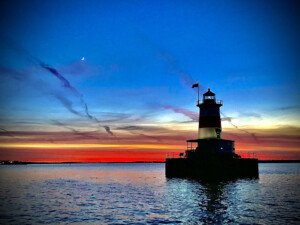Global Reach
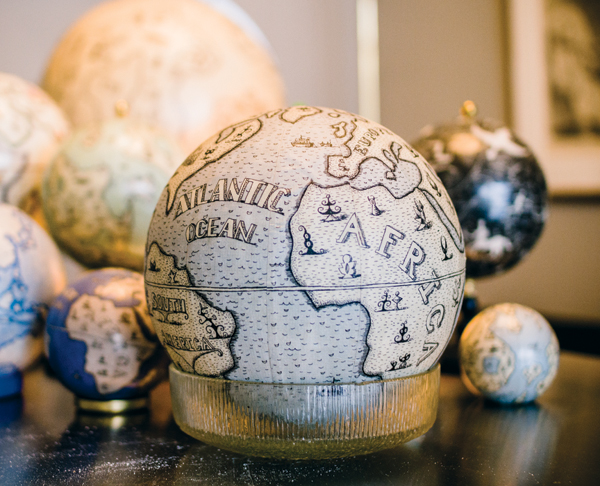
David Colombo’s exquisite handmade pieces start at $125 for a 2.5-inch terrestrial globe. / Photos by Simon Simard.
On the third floor of the Somerville Brickbottom Artists building, amidst stacks of 1950s jazz records and cups filled with paintbrushes, David Colombo greets me with a platter of cookies and the makings of a brand-new world.
“Now traditionally, these would’ve been etched or engraved onto a copper plate and then run through a traditional intaglio printer,” the globe maker says, an oval sliver of the eastern seaboard between his fingers. It’s a process that makes for a beautifully fine-lined globe, he says, but it’s also so time-consuming that it leaves little room for creativity. Fortunately, he adds, now “we have Photoshop.”
And with that, he drenches the sliver—called a “gore” in globe-making circles—with paste and carefully smooths the paper onto the surface of a blank wood-en sphere.
By day, Colombo works as an art conservator, specializing in the restoration of prints, Japanese screens, and antique globes for collectors and galleries around the New England area. But in his spare time, he is a craftsman of globes, one of only a few in the U.S.
He first picked up the skill five years ago. “It was mostly just sort of an experiment to see if I could make them, how difficult that would be,” he says, “and comparing them to the way they were traditionally made.”
And he very nearly couldn’t, he admits—it took about 30 tries just to get the venture off the ground. “The biggest problem was finding out what kind of paper would be strong and thin and could do the things that I needed to do,” he says.
Modernizing the rest of the process was simple: Colombo spends at least a week sketching a map onto a blank sphere covered in slivers of paper, then steams the paper off and scans each piece into his computer. Finally, he prints the components of the map out, carefully affixing them to the sphere once again.
These days, Colombo makes at least 100 pieces a year, selling them at galleries like the Society of Arts and Crafts, on Newbury Street, and 13Forest Gallery, in Arlington. Each one is unique, with its own coastline quirks and handpainted touches. Many feature the continents you’d expect to see on a globe—Africa, Asia, North America. But his favorite creations are the ones he invents entirely new worlds on, with imaginary coastlines, nonexistent islands, and fantastic, Hieronymus Bosch–inspired flora and fauna.
“My favorite aspect of early maps and globes is when the cartographers are just making things up and trying to fill in areas they don’t know,” Colombo says. “Especially the western coast of this continent, before it was America—explorers had no idea what was there, so even into the 18th century, there’s this whole side of the globe where they were just kind of making things up.” He grins at the thought. “Here be dragons.”
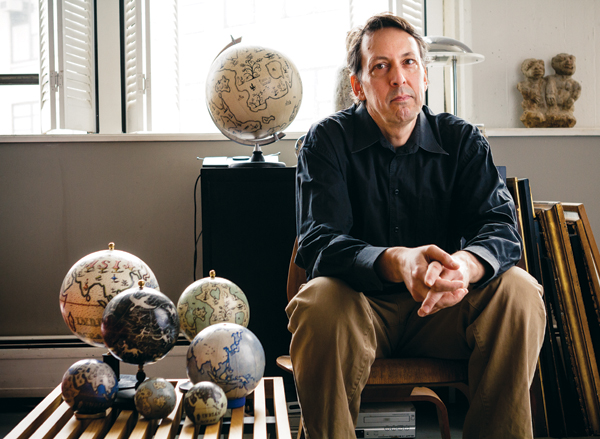
The artist in his Somerville studio.

Crafting globes requires a multitude of brushes and other tools.

Colombo softens slivers of etched paper with water before affixing them to the spheres.

Colombo carefully pastes a gore onto a sphere.
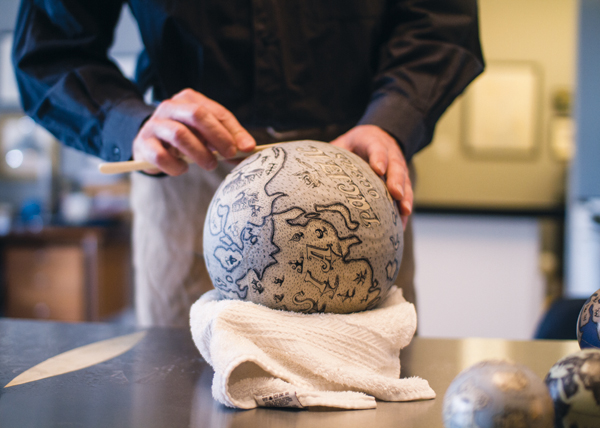
Colombo puts the final touches on a piece.
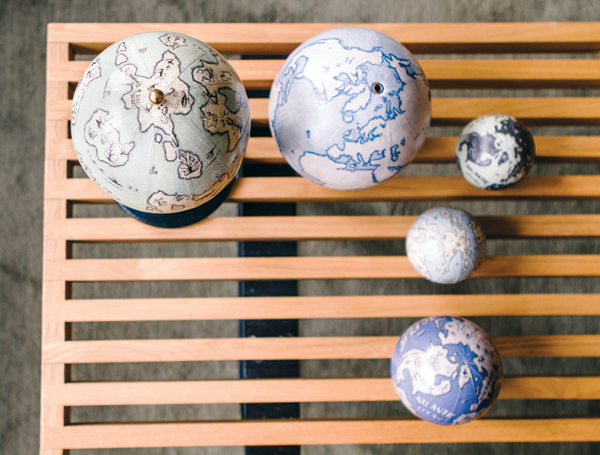
Completed globes await their wooden bases.
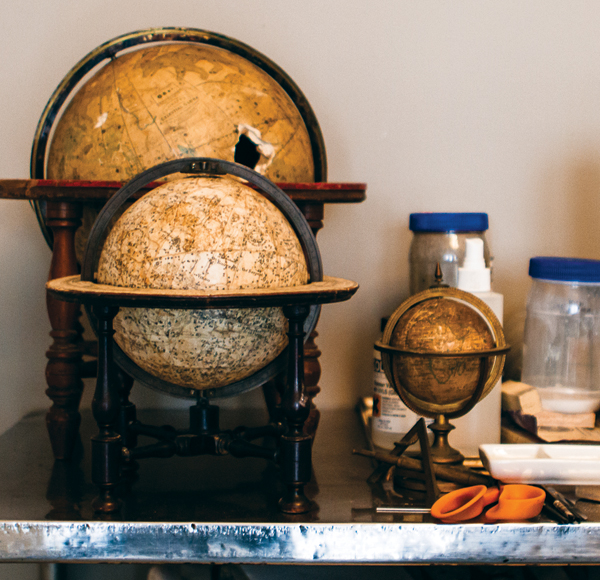
Restoring antique globes like these early-19th-century pieces is a painstaking process.


